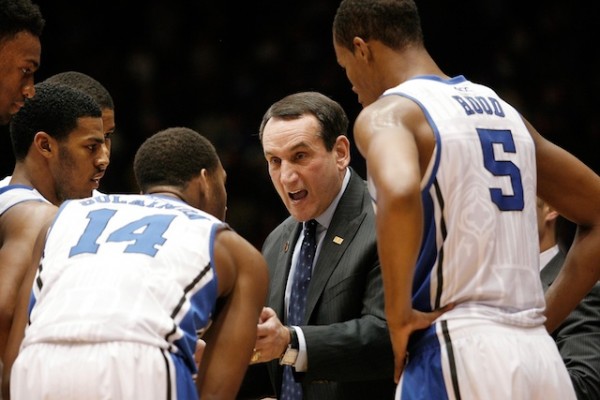Duke and North Carolina Making Adjustments After Slow ACC Starts
Posted by Brad Jenkins (@bradjenk) on January 19th, 2014After the second weekend of conference play, the ACC’s historically best two programs were in trouble. North Carolina was all alone at the bottom of the standings with an 0-3 record, and Duke wasn’t in much better shape at 1-2. Since then, both schools’ Hall of Fame coaches have made some changes to try and turn things around. At least for one week, each coach has managed to stop the bleeding. Duke has now won two straight games — over Virginia (69-65) and N.C. State (95-60) — since Mike Krzyzewski made some lineup and style changes; and North Carolina got its first ACC win Saturday over Boston College (82-71) in the Tar Heels’ only game of the week, featuring a starting lineup change from Roy Williams. Below we will look at the problems that each team was confronting, what the coaches did to address those issues, and consider the results and future expectations as a result.
-
Duke
Problems. The Blue Devils’ defense simply has not been good enough, ranking outside of Ken Pomeroy’s top 100 in adjusted efficiency for much of the season. Opponents were scoring easily in the paint — perhaps not surprising with Duke’s lack of interior size. But even worse was Duke’s inability to counter that deficiency with good perimeter pressure, and the lack of player communication and teamwork in defensive help situations. Offensively, the Blue Devils were not playing well as a unit, often falling into the habit of one-on-one play with little ball movement.
Adjustments. Krzyzewski and his staff decided to not only make a change in the starting lineup — inserting freshman Matt Jones — but they adjusted the entire rotation. As the TV commentators noted in each game, it was as if Duke was making hockey-style line changes in the first half. Both games followed the same pattern. About three minutes after the tip, five new Blue Devils checked in. A few minutes later, all the starters returned. Soon after that, it was another complete change. At that point in each contest — roughly 10-12 minutes in — all 11 scholarship players had logged at least three minutes of action. While the five-at-a-time substituting did not continue into the second half, Krzyzewski kept using his bench, with no player seeing more than 30 minutes in either contest. There was also a subtle stylistic change on each end of the court. The Blue Devils extended their defense further out than they had been, and they played more of a motion offense instead of mostly using set plays.











































